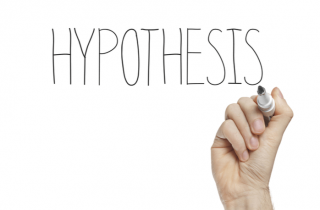Toll-Free US & Canada 24/7:
1-770-659-7014
Argumentation Theory: How to Ensure People Through Text

Influencing people through texts is a special field of communication. If during a face-to-face meeting or on the phone, part of the burden of persuasion can be attributed to visual and vocal components, in written text everything is decided by letters.
Textual persuasion is not just some secondary persuasive element. Not some kind of ballast invented by “cunning copywriters and marketers”. It is a big layer of psychology in which colossal opportunities are hidden.
Those who adopt the power of persuasion with a word receive at their disposal a most powerful weapon. And this is not hyperbole. These are facts.
Technique 1. Use “when”, not “if”
Let’s start with the simplest. It works as follows: every time, when you need to use the word “if”, replace it with “when”. The principle is simple: “if” denotes uncertainty, the possibility of maneuvering and choosing. The word “when”, on the contrary, allows you to fix the position and create an illusion of a completed action.
Examples:
- If we move to the contract signing stage, we can discuss additional details.
- When we move to the stage of signing the contract, we can discuss additional details.
In the first case, the reader sees your uncertainty and can even “get infected” with it. In the second case, we spoke almost about a fact that has already happened, but due to some (temporary) misunderstanding, has not yet been settled.
Technique 2. The rule of Socrates
Another simple technique was developed by the famous philosopher Socrates. The technique works quite simply: if a person is asked two questions to which the answer “yes” is almost inevitable, then it will be much more difficult for him to answer “no” to the third question.
In other words, we ask two thematic preparatory questions, and the third is the main question, to which it is also important for us to get the answer “yes”.
Example:
- Michael, you were with us the other day, right (it is assumed that he was)? Remember, I showed you the blanks for the task (assumed he remembers)? Could you send me your brief thesis (that’s what we really need) on them?
The questions must be on the same topic. No need to ask if a person has been drinking water for the last 2 months, if he sleeps on a bed, and then start talking about the thesis. This doesn’t work.
Technique 3. Mini-benefits
It’s a fairly simple, but very effective technique that came to us from selling texts. It works as follows: right in the text, we show the person the real benefits that he will receive if we can convince him.
For example:
- Nicole, immediately after signing the contract, we will be able to send you for retraining. Further, come the mini-benefits: the program is simple in fact and takes only a little time. And in your free time, you can relax and have some fun.
By the way, a new working desk is already waiting for you. Another mini-benefit is coming: we chose the quietest, at the end of the floor, where it is quiet and there is more sun.
Yes, it may seem that these are trifles, and they are unlikely to make a decisive impact. However, these are the little things that make up the success of the strategy as a whole. It’s a little bit there, it’s positive here, and there’s another mini-benefit, but in the end, a person simply won’t raise his hand to write “no, I’m not interested.”
Technique 4. “Final chord”
The “Final Chord” technique is similar to a big trump card, which is laid out at the very end of the game. It seems that everything is already clear, no revolutions are expected in the game, and then an ace falls on the table, which radically changes the course of the game.
For example, we have already given all the benefits, talked about the conditions, and at the end, we said that the first applicant who agrees will be given a car for personal use.
Or something else that can become a motivating action to answer “yes” today and right now.
As a final note
Finally, a piece of advice: if you want to get extra points in the art of persuasion, be sure to use these and other psychological tricks to get your arguments through. In the fight for persuasion, even the smallest things in your text matter, and when there are a lot of them, then this is no longer a trifle, but a serious weapon.


